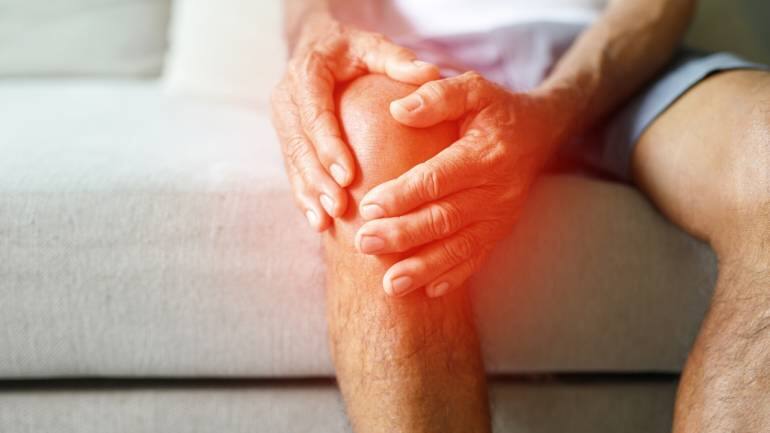Symptoms of ligament tear: A sharp pain, swelling, difficulty walking, and sometimes a popping sound at the time of injury indicate a ligament tear (Image: Canva)
Knee injuries are among the most common musculoskeletal issues, affecting people of all ages. These injuries can be caused while playing sports, due to accidents, or ageing and can impact mobility and daily life. However, not all knee injuries are alike, they differ in cause, severity, pain, and treatment.
Understanding knee injuries is crucial in determining the right treatment and recovery process, warns Dr Gurava Reddy, Chairman and Managing Director, KIMS-Sunshine Hospitals. From ligament tears to osteoarthritis, Dr Reddy lists these 5 common knee injuries, their causes, symptoms, and how to treat them:
They are caused due to sudden twists and high-impact injuries. “Ligaments are elastic tissues that hold bones together, providing stability and strength to the knee,” he says. Sudden twisting motions, particularly during high-impact sports or accidents, can lead to ligament tears. “A sharp pain, swelling, difficulty walking, and sometimes a popping sound at the time of injury indicate a ligament tear,” says Dr Reddy. Depending on which ligament is injured; ACL, PCL, MCL, or LCL—the severity and treatment vary.
Story continues below Advertisement
Also read | Causes, symptoms and cure for inner knee pain: Try hamstring stretches or half squats to alleviate pain
For minor tears, rest, ice therapy, and physiotherapy can aid recovery, he says and adds, “However, complete ligament tears often require surgical intervention, especially for athletes or those with active lifestyles. Rehabilitation post-surgery is essential for restoring strength and mobility.”
 Causes of meniscus tear: The meniscus is a cartilage that cushions the knee joint. Sudden twisting motions, heavy lifting, or deep squatting can cause a tear (Image: Canva)
Causes of meniscus tear: The meniscus is a cartilage that cushions the knee joint. Sudden twisting motions, heavy lifting, or deep squatting can cause a tear (Image: Canva)
The meniscus is a cartilage that cushions the knee joint. Sudden twisting motions, heavy lifting, or deep squatting can cause a tear. “Pain while bending or straightening the knee, swelling, stiffness, and a locking sensation are signs of a meniscus tear,” notes Dr. Reddy and adds, “For mild cases, rest, ice, and strengthening exercises help in healing. However, larger tears or persistent pain may require arthroscopic surgery, a minimally invasive procedure that removes or repairs the damaged cartilage.”
Patellar tendinitis, or jumper’s knee, is caused by overuse of the knee joint, leading to inflammation of the patellar tendon. “It results in pain just below the kneecap, tenderness, and stiffness, especially after physical activity. Treatment includes stretching, physiotherapy, and applying warm or ice packs to reduce discomfort. In severe cases, advanced treatments like ultrasound therapy or PRP (platelet-rich plasma) injections may be required for effective healing,” says Dr Reddy.
Also read | Knee pain treatment: Expert tips on how to get rid of knee pain fast
- Osteoarthritis of the knee:
It occurs due to cartilage wear and tear, often caused by ageing, obesity, or prolonged strain. Dr Reddy informs, “It leads to persistent pain, stiffness, swelling, and reduced flexibility, especially in the morning. Treatment includes lifestyle modifications, weight management, physiotherapy, and medications to manage symptoms” In severe cases, robotic-assisted knee replacement surgery may be necessary to restore mobility and improve quality of life.
A sudden impact, fall, or structural weakness in the knee can cause kneecap dislocation, leading to severe pain, swelling, instability, and visible misalignment. Immediate medical attention is required to realign the kneecap, followed by rest, bracing, and physiotherapy to restore strength and stability. In cases of repeated dislocations, surgery may be necessary to prevent further complications.
Disclaimer: This article, including health and fitness advice, only provides generic information. Don’t treat it as a substitute for qualified medical opinion. Always consult a specialist for specific health diagnosis.




 Causes of meniscus tear: The meniscus is a cartilage that cushions the knee joint. Sudden twisting motions, heavy lifting, or deep squatting can cause a tear (Image: Canva)
Causes of meniscus tear: The meniscus is a cartilage that cushions the knee joint. Sudden twisting motions, heavy lifting, or deep squatting can cause a tear (Image: Canva)